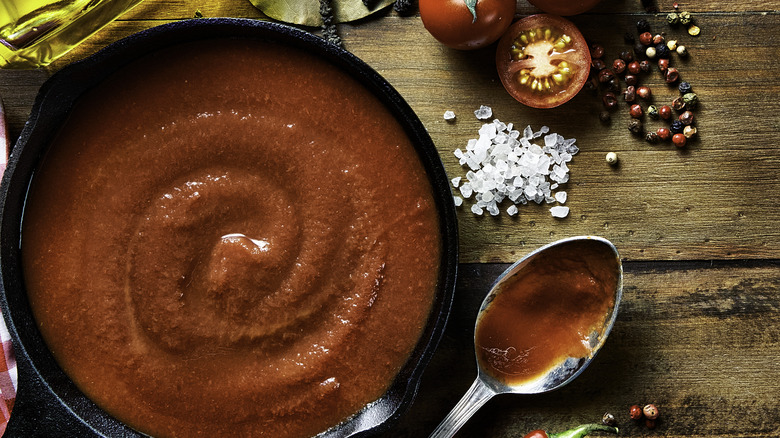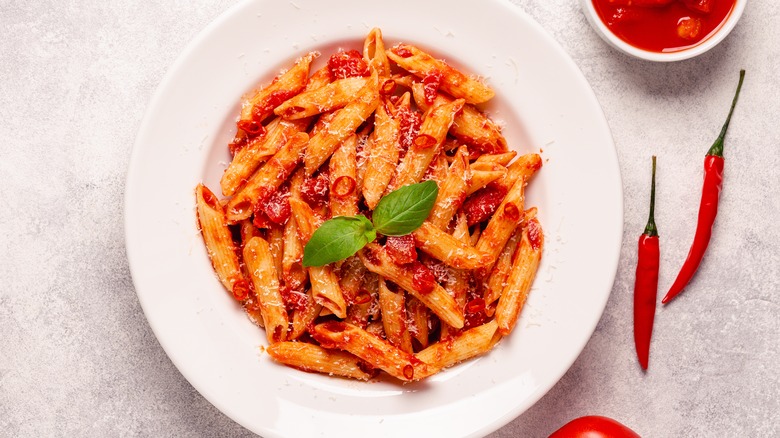The Best Type Of Pasta To Pair With Arrabbiata Sauce
Move over, marinara. As the tomato-based sauce's spicier cousin, arrabbiata gets its beloved, trademark flavor from crushed red pepper flakes. It's a classic pasta sauce for good reason. However, a sauce is only as good as its pasta. My Italian family has been making arrabiata for years, and one particular pasta always steals the show: penne.
As a tubular pasta, penne — specifically the ridged "rigate" version — catches the sauce well. It's one of the most versatile noodles, as those ridges present ample opportunities to retain all of the arrabbiata, which can veer on the chunkier side. It's for this reason that penne is also ideal in chunkier sauces, like Bolognese, where you want noodles thick enough to hang onto those chunks of meat.
As such, pastas similar in shape to penne likewise hold strong in arrabbiata. Think ziti or anything with gaps that maximize the sauce's presence. After all, there's a reason why there are so many types of pasta: each serves a unique purpose thanks to its respective form. That's not to say spaghetti or fettuccine will be bad in arrabbiata, however. Once you cook your penne pasta, all that's left to perfect is the sauce and its level of spice. Making your own arrabbiata requires little more effort than making a tomato sauce, albeit with more oomph.
Make penne arrabbiata with just a few ingredients.
To make your own penne arrabbiata, follow Tasting Table's arrabbiata recipe. In line with classic Italian dishes, the sauce is all about simple but quality ingredients. To start, you'll want to heat olive oil, smashed garlic, and those important red pepper flakes over medium-low heat. Once the mixture sends an aroma through your kitchen, up the heat and add your diced onions and garlic.
After a few minutes, it's time to cook the sauce's baseline ingredients: tomatoes. Some recipes call for whole peeled tomatoes, though you can also use fresh tomatoes. Regardless of your choice, you'll want the tomatoes to cook until they're broken down into a more liquid-like sauce. Once the sauce reaches your desired consistency, you can season it with salt and basil leaves before mixing in your penne. The pasta shape will let your sauce shine — and sop up all the spice.

